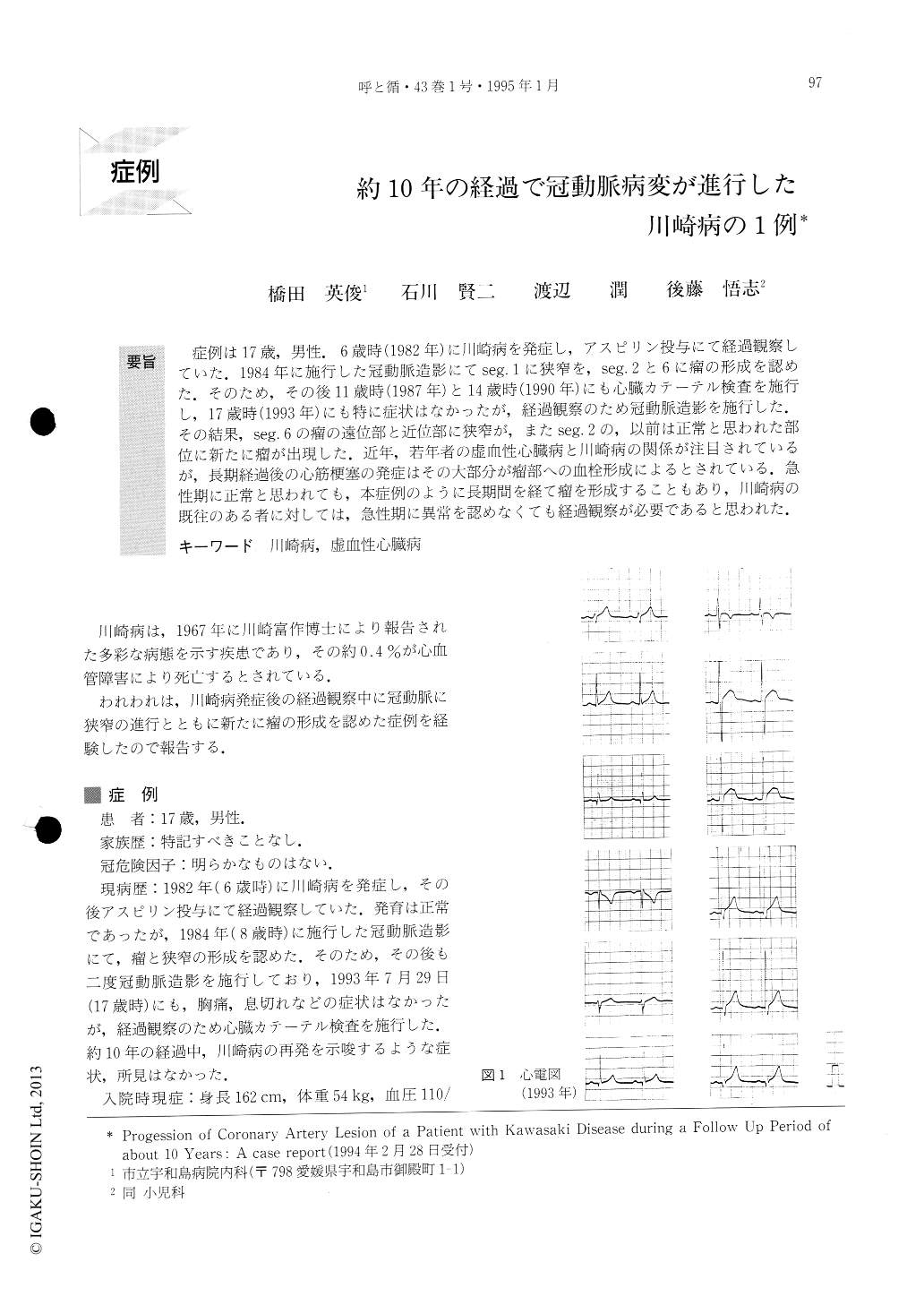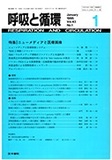Japanese
English
- 有料閲覧
- Abstract 文献概要
- 1ページ目 Look Inside
症例は17歳,男性.6歳時(1982年)に川崎病を発症し,アスピリン投与にて経過観察していた.1984年に施行した冠動脈造影にてseg.1に狭窄を,seg.2と6に瘤の形成を認めた.そのため,その後11歳時(1987年)と14歳時(1990年)にも心臓カテーテル検査を施行し,17歳時(1993年)にも特に症状はなかったが,経過観察のため冠動脈造影を施行した.その結果,seg.6の瘤の遠位部と近位部に狭窄が,またseg.2の,以前は正常と思われた部位に新たに瘤が出現した.近年,若年者の虚血性心臓病と川崎病の関係が注目されているが,長期経過後の心筋梗塞の発症はその大部分が瘤部への血栓形成によるとされている.急性期に正常と思われても,本症例のように長期間を経て瘤を形成することもあり,川崎病の既往のある者に対しては,急性期に異常を認めなくても経過観察が必要であると思われた.
A 17-year old boy, who had the first attack of Kawasaki disease at the age of 6, had been treated with Aspirin. Two years later, coronary arteriography (CAG) revealed aneurysms at Segment 2 and 6, and a stenosis at Seg. 1. Because of this, successive coronary arteriographic examinations were performed at the age of 11, 1-1 and 17, although he remained asymptomatic. The CAG revealed an additional aneurysm at Seg. 2 and also new stenotic lesions at the distal and proximal sites of the old aneurysm of Seg. 6.
Recent investigations suggest Kawasaki disease may play an important role on the development of CAD among young people. Embolus formation in and stenosis around an aneurysm is thought to be the main, cause of myocardial infarction among the young. Later development of coronary arterial lesions, as is shown in this case, indicates that negative CAG in the acute phase of the disease does not preclude the need for arteriographic examinations to be carried out for a long term.
In conclusion, we suggest successive coronary arterio-graphies for a long term after convalescence of Kawasaki disease. regardless of clinical symptoms.

Copyright © 1995, Igaku-Shoin Ltd. All rights reserved.


